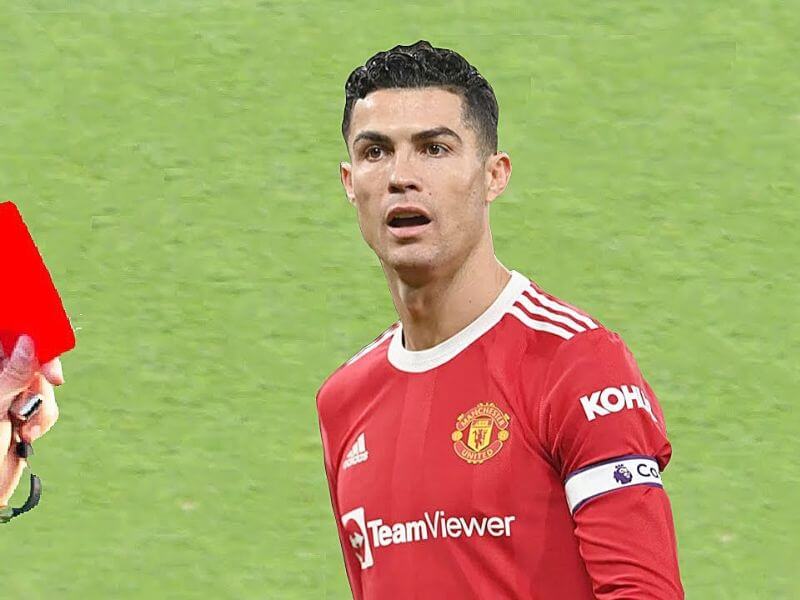What does the cards mean in soccer ? Discipline in football is a major aspect of the sport, but it’s not just physical fouls that bring about some sort of disciplinary action.
Given today’s climate in terms of the game, and political correctness, players can be admonished and disciplined in one of three ways – they can be shown a Yellow Card, a Red Card, or they can be suspended for a specific number of games.
Before we delve deeper into these cards, and what they mean, let’s first take a quick look back at how they came into being.
THE ORIGINS OF RED AND YELLOW CARDS
Red and yellow cards were the brainchild of Sir Kenneth George Aston. It is said that the invention was spurred on by brothers Jack and Bobby Charlton who had to talk to the FA find out whether they had been cautioned by the referee in recent games.
While Aston was sat in his car at a set of traffic lights, watching the change sequence, the red/yellow card idea was born. It would signal a clear infraction and everyone, including the player, would be left in no doubt as to what has transpired.
But that is not the only thing for which Ken Aston is remembered. He was also the referee of what many regard as the dirtiest ever game of football. The game that came to be known as the Battle of Santiago.
It happened in the 1962 World Cup when Chile met Italy. It must have sown the seeds that later flowered into the invention of red and yellow cards which first came into use in the 1970 FIFA World Cup.
In this article, we are going to take a look at each of the disciplinary procedures; why they are administered, and what they mean, starting with the Yellow Card.

THE YELLOW CARD
In essence, a yellow card is given as a caution or warning. It provides players receiving them another chance to stay on the field for the remainder of the game, whereas a red card means that the player has to leave the pitch with immediate effect. Two yellow cards shown to the same player within the same game results in a red card being given and the player having to leave the field play at once.
There are basically six different types of offence that can result in a yellow card being shown to a player. They are:
- Unsportman-like behaviour
- Dissent by word or deed
- Repeated infringement of the rules
- Delaying the restart of play
- Not maintaining the correct distance from a corner or free-kick.
- Leaving or re-entering the field of play without the referee’s permission.
The current rules this season stipulate that any player accumulating a certain number of yellow cards will face disciplinary action in the form of match bans. It works on the following principles:
- Five yellows accumulated before match week 19 results in a one-match ban.
- Ten yellows accumulated by week 32 will result in a two-match ban.
- Fifteen yellows by week 38 means a three-match ban.
- Twenty yellows in a season can result in the Regulatory Commission punishing the player in a manner that they deem to be most fitting.
Generally, the suspensions laid out above refer to league matches only, not tournaments.
THE RED CARD
As we have already stated, a red card means instant dismissal. When it comes to the length of any suspension period, it is dependent on the nature and seriousness of the foul, as follows:
- For a sending off, after a second yellow in one game, the suspension period is one match.
- For a so-called professional foul, a player will also receive a one-match ban.
- If the foul in question is dissent, it will normally be a two-match ban.
- If we are talking about violent conduct, the punishment is normally a three-match ban.
The above types of fouls, and the length of the bans that go with them, are only given in terms of guidance. Each foul must be reviewed on its own merits and circumstances, and the suspension award decided upon can be longer or shorter.
OFF-FIELD PERSONNEL INDISCRETIONS
From the beginning of the 2019/2020 season, referees were empowered to show managing and coaching personnel yellow or red cards for any indiscretions. But that is not all.
If there is serious misconduct on the touchline, and the guilty party instigating the fracas cannot be identified, it is the senior coach within the technical area who will be on the receiving end of the card.
What Does a Yellow Card Mean in Soccer? A Clear Explanation
What does a yellow card mean in soccer? A yellow card is given to a player as a warning by the referee.
In professional soccer, a yellow card is just part of the game. In fact, according to Footy Stats, there has been an average of 4.5 yellow cards per MLS game.
In youth soccer, receiving a yellow card can be catastrophic for a player. At younger ages, tantrums and tears can follow.
Meaning of a Yellow Card
When a referee shows a yellow card in soccer, it means that they are cautioning a player for unsporting behavior, consistently infringing the rules of the game, dissenting, or delaying the restart of the game.
The yellow card is a warning to the player that they should modify their behavior, or they may be shown a red card and sent off the field.
A player may receive a yellow card for a variety of reasons, including:
- Committing a reckless or dangerous tackle
- Deliberately touching the ball with their hands
- Failing to respect the required distance when a free-kick is taken
- Engaging in unsporting behavior, such as diving or simulation
- Time-wasting or delaying the restart of play
If a player receives two yellow cards in the same game, they will be shown a red card and must leave the field.
It’s important to note that a yellow card does not necessarily result in a suspension, but if a player accumulates a certain number of yellow cards over a set period, they may face a suspension.
Ultimately, the referee has the final say on whether a yellow card should be shown, and their decision is not open to appeal.
As a soccer player of any age, it’s essential to respect the referee’s decision and modify your behavior if you receive a yellow card to avoid being sent off the field with a red card.
Consequences of Receiving a Yellow Card
If you receive a yellow card during a soccer match, there are immediate consequences that you need to be aware of. These consequences can affect your playing time and your team’s ability to win the game.
Yellow Card During the Match
When you receive a yellow card during a match, the referee will record your name and the time of the offense.
You can remain on the soccer field after you receive a yellow card. But, sometimes your coach may take you off since you’re a liability of receiving a red card if another yellow card is assessed to you.
Post-Match Consequences
Receiving a yellow card can also have consequences beyond the current match. If you accumulate too many yellow cards during a season, you may be suspended from future games. The exact number of yellow cards that can lead to a suspension varies depending on the league and the rules in place.
In conclusion, receiving a yellow card in soccer can have immediate and long-term consequences for both you and your team. It’s important to play within the rules and avoid behaviors that can lead to receiving a yellow card.
Yellow Card Offenses
A yellow card in soccer is a cautionary measure taken by the referee to indicate that a player has committed a foul. Simply, it is a warning to the player that they should avoid committing similar offenses in the future. Here are the types of offenses that warrant a yellow card:
Unsportsmanlike Behavior
Unsportsmanlike behavior refers to any act that is contrary to the spirit of fair play. It includes actions such as simulation, diving, faking injuries, flopping, and time-wasting.
This can also include verbal abuse, taunting, and gestures that are offensive or insulting to opponents, teammates, or officials.

Persistent Infringement
Persistent infringement refers to repeated fouls committed by a player.
It includes actions such as tripping, pushing, pulling, and holding an opponent.
Persistent infringement also includes any action that is deemed reckless or dangerous, such as a high tackle or a two-footed challenge.
Delaying the Restart of Play
Delaying the restart of play refers to any action that is taken to prevent the game from continuing.
It includes actions such as kicking the ball away, holding onto the ball for too long, or standing in front of an opponent to prevent them from taking a quick free-kick or throw-in.
Failure to Respect the Required Distance
Failure to respect the required distance refers to any action that is taken to prevent an opponent from taking a free-kick or corner kick.
It includes actions such as standing too close to the ball, encroaching on the required distance, or not retreating the required distance when the referee indicates.
Many players in my son’s league like to jump in front of a free kick so the offensive team can’t start an attack quickly. Usually, the ref will let it go the first one or two times but I’ve seen yellow cards handed after that.
Arguing with the Referee
A yellow card can also be given to a player for dissent by word or action. This means that a player has shown disagreement or disapproval towards a decision made by the referee.
The player can express their dissent by either speaking or gesturing in a disrespectful manner towards the referee or other players.
According to the Football Association, dissent includes “verbal or physical disagreement with a decision of the referee.” This can include arguing with the referee, making rude gestures, or using foul language.”
Above is information what does the cards mean in soccer. Hopefully, through the above content, you have a more detailed understanding of what does the cards mean in soccer .Thank you for reading our post.









